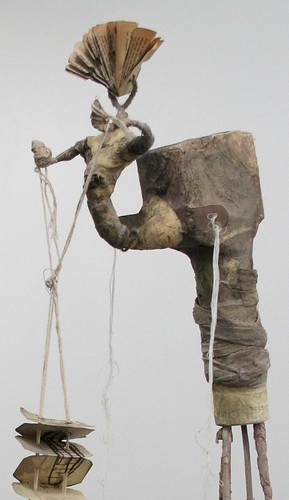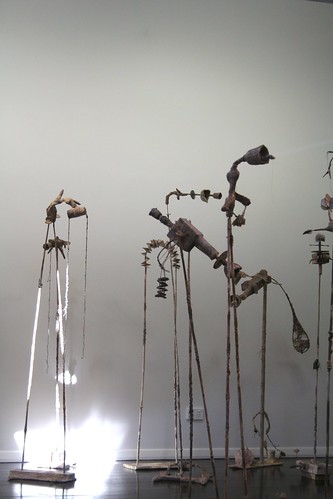The application was a bit more of a rush than was ideal. I had to wait till Peter had the chance to visit and we could talk about it all and I could get some of the information I needed. He was very generous with his assistance, suggesting some ‘names’ I could put in the marketing strategy, and in what context, and filling me in on all the details I was unsure about.
DESOLATION ROW (detail), at Silvershot. Installation of 28 sculptures, Dimensions variable. Max. height approx. 1.9 metres. Paper, textiles, mixed media. The Ergas Collection, Canberra.
Jade Pegler, 2006.
For me quite a few things turned out differently. I was very wrong about ‘estimated income from sale of work’ – I was lucky, it was all bought for the Ergas Collection.
I learnt a lot. At first I had a lot of trouble getting my income to equal the expenditure, mainly because the gallery was donating the space so that had to be part of the income. Eventually someone told me that it could also be included in the expenses bit.
Despite the hard work it was well worth the effort. I did not have to borrow money, and was able to do things like visit galleries (useful research), meet with artists, collectors and curators, and of course, document the work, which had been impossible to do half-decently before it was in the gallery, despite several attempts.Some other good things to come out of it are that I was commissioned to make five large sculptures and will be having a show in Sydney later in the year.
More photos of the work here and on my website.







